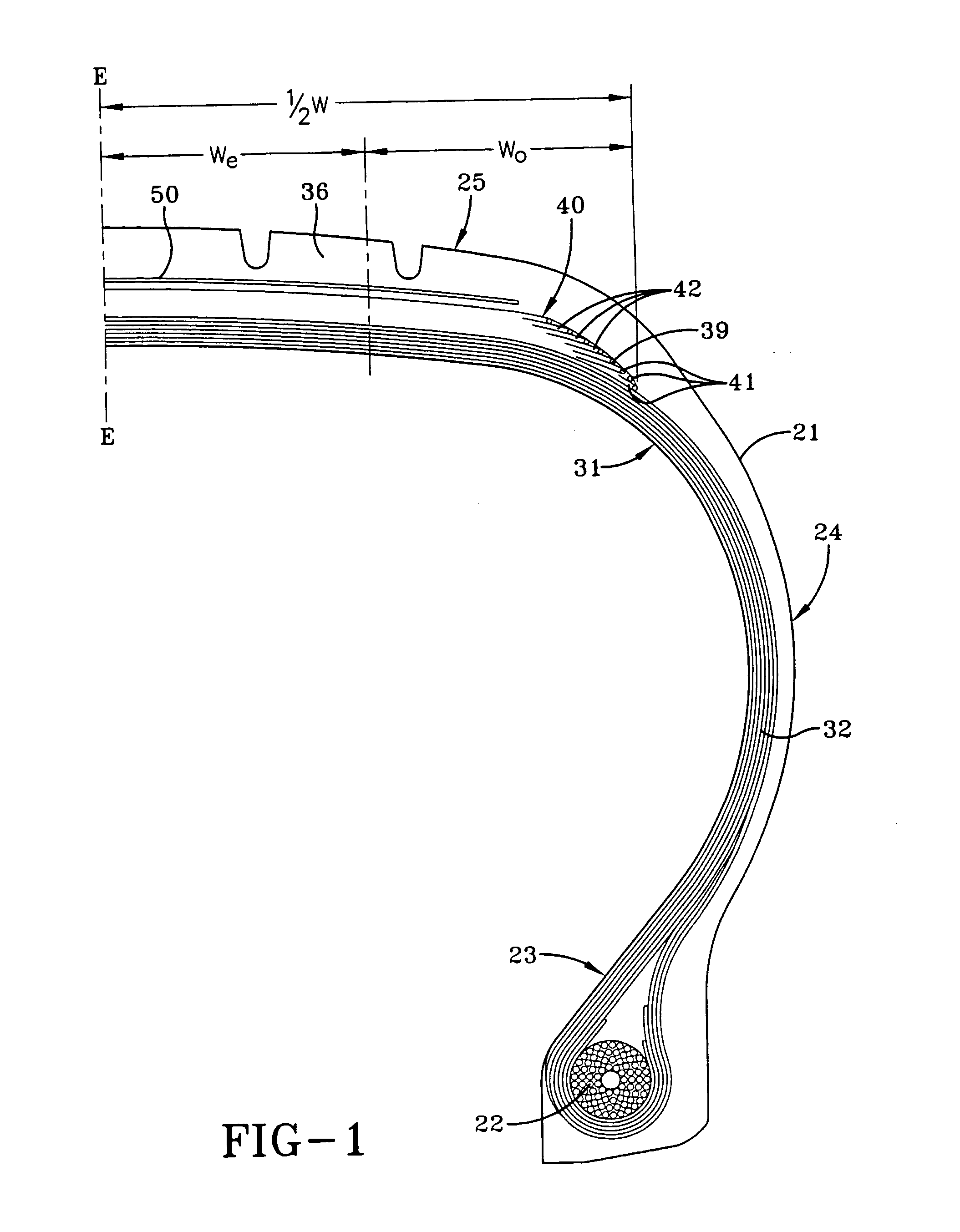Composite belt structure and a method of manufacturing
a belt structure and composite technology, applied in the field of pneumatic tires, can solve the problems of high degree of flexure in the crown area of pneumatic tires for high-speed applications, affecting the performance of pneumatic tires, cutting off and scattering of belts and treads,
- Summary
- Abstract
- Description
- Claims
- Application Information
AI Technical Summary
Benefits of technology
Problems solved by technology
Method used
Image
Examples
Embodiment Construction
[0047] In FIGS. 1 and 2, numeral 21 is a radial tire of the preferred embodiment of the invention, as shown, to be mounted onto an airplane, which comprises a pair of bead portions 23 each containing a bead core 22 embedded therein, a sidewall portion 24 extending substantially outward from each of the bead portions 23 in the radial direction of the tire, and a tread portion 25 of substantially cylindrical shape extending between radially outer ends of these sidewall portions 24. Furthermore, the tire 21 is reinforced with a carcass 31 toroidially extending from one of the bead portions 23 to the other bead portion 23. The carcass 31 is comprised of at least two carcass plies 32, e.g. six carcass plies 32 in the illustrated embodiment. Among these carcass plies 32, four inner plies are wound around the bead core 22 from inside of the tire toward outside thereof to form turnup portions, while two outer plies are extended downward to the bead core 22 along the outside of the turnup po...
PUM
 Login to View More
Login to View More Abstract
Description
Claims
Application Information
 Login to View More
Login to View More - Generate Ideas
- Intellectual Property
- Life Sciences
- Materials
- Tech Scout
- Unparalleled Data Quality
- Higher Quality Content
- 60% Fewer Hallucinations
Browse by: Latest US Patents, China's latest patents, Technical Efficacy Thesaurus, Application Domain, Technology Topic, Popular Technical Reports.
© 2025 PatSnap. All rights reserved.Legal|Privacy policy|Modern Slavery Act Transparency Statement|Sitemap|About US| Contact US: help@patsnap.com



